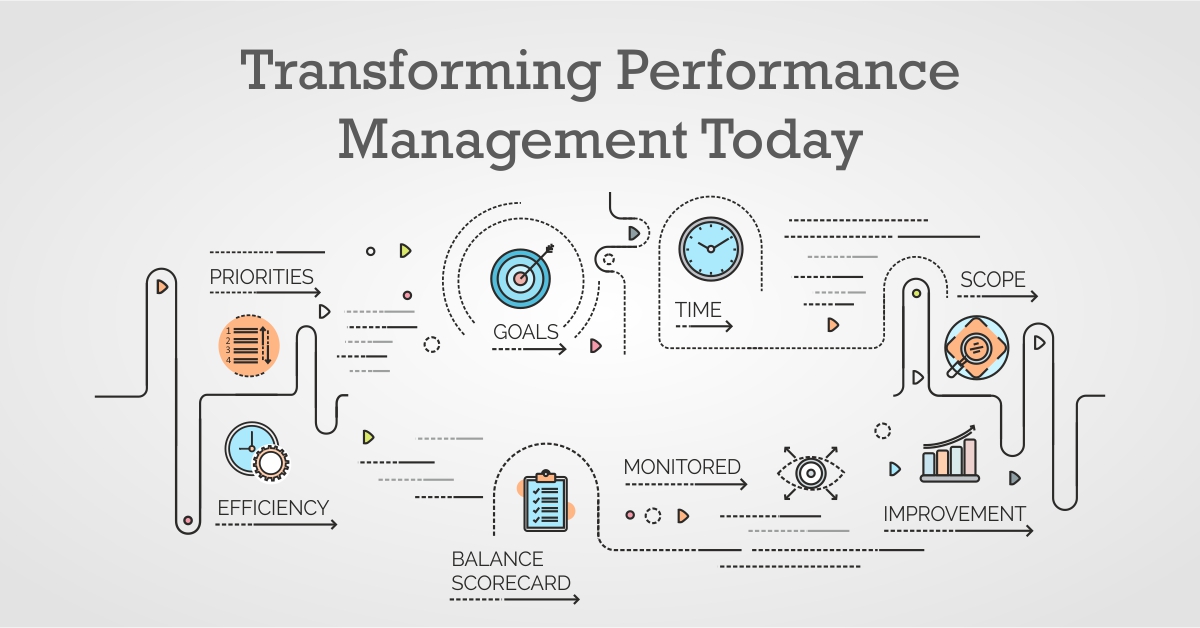A performance management survey conducted by Brandon Hall found that 70% organisations viewed their performance management programs as average. This statistic raised some alarm signals since the report also found a strong connection between employee retention (linked to managers’ / organisation’s ability to inspire high performance) customer satisfaction and profitability. So if performance management was a determiner finally of customer satisfaction and profitability, then performance management systems could not remain average.
Subsequently, the Bersin report for 2016 highlighted the demise of forced ranking and rating systems, in favor of real time ongoing check-ins, agile goal management and feedback systems. The predictions from Bersin Report of 2017 assessed the progress of this trend through their finding, that 90% of companies have successfully redesigned their performance management processes.
Performance management is no longer viewed as an annual event. Several organisations have taken conscious efforts towards redesigning the processes they use to measure, assess and reward employee performance. Moving away from a performance management process that was run with an assessment focus, organisations are changing to a development focus.
Whilst the processes have been changed to reflect the dynamism and the pro-activity required for managing and developing performance, the changes in the ecosystem have not kept pace. For instance the development of the managers to implement this system in the spirit of it, the embedding of performance management with development and career paths etc. still need attention.
Let’s take a step back and identify a few key areas of focus that organisations need to understand while re-engineering their performance management processes.
- No change can happen single-handedly, change is always a collaborative effort, thus it becomes essential to get the buy-in and support from each and every employee within the organisation.
- The new process needs to be integrated within the organisation culture to ensure sustenance of the change.
- Leaders need to be aligned and executing the new system with fervor and due time investment, before we can hope for any significant shift to happen.
The best example of successful implementation of this change can be seen with Adobe. The organisation has already seen the benefits of discarding its annual review process: increase in innovation, employee engagement and retention. The organisation has developed internal coaches in their managers, enabling them to give feedback, provide guidance for performance improvement, growth and development.
There are examples of other organisations also taking deliberate steps in this direction. Let’s take the case here of our work with a large international bank. This client was highly development focused, however faced a challenge in creating good quality development plans. Although the people leaders within the organisation had a very good understanding of the leadership competencies, they were not very skilled at dovetailing the competencies into their development plans.
In order to help the organisation to improve the quality of their development plans, we created the ‘People Leadership Development Guides’ for all the competencies. The guides enabled the leaders to identify ways to enhance current performance and build capabilities for future responsibilities. The guides also enabled the leaders to build and sustain a culture of dovetailed performance management and development across the organisation.
The success of this initiative was documented and shared as a case study globally.
One of the things that went well and enabled success with this client was the ‘buy-in’ or support from the entire company. Since it already had a developmental orientation, the significance of the change was readily accepted, and the impact of the development guides were felt across the organisation. A good change initiative is collaborative and can be integrated with the organisation’s culture.
References:
Bersin, J. (2016). https://www2.deloitte.com/content/dam/Deloitte/at/Documents/human-capital/bersin-predictions-2016.pdf. Retrieved from https://www2.deloitte.com/.
Research, B. H. (2014). http://www.halogensoftware.com/learn/whitepapers-and-ebooks/the-value-of-ongoing-performance-management?source=PR&c=PR_BLOG_2015. Retrieved from http://www.halogensoftware.com/.
Research, D. (2016). https://www2.deloitte.com/content/dam/Deloitte/global/Documents/About-Deloitte/central-europe/ce-global-human-capital-trends.pdf. Retrieved from https://www2.deloitte.com/.
Review, H. B. (2016). https://hbr.org/2016/02/fixing-performance-appraisal-is-about-more-than-ditching-annual-reviews. Retrieved from https://hbr.org/.







